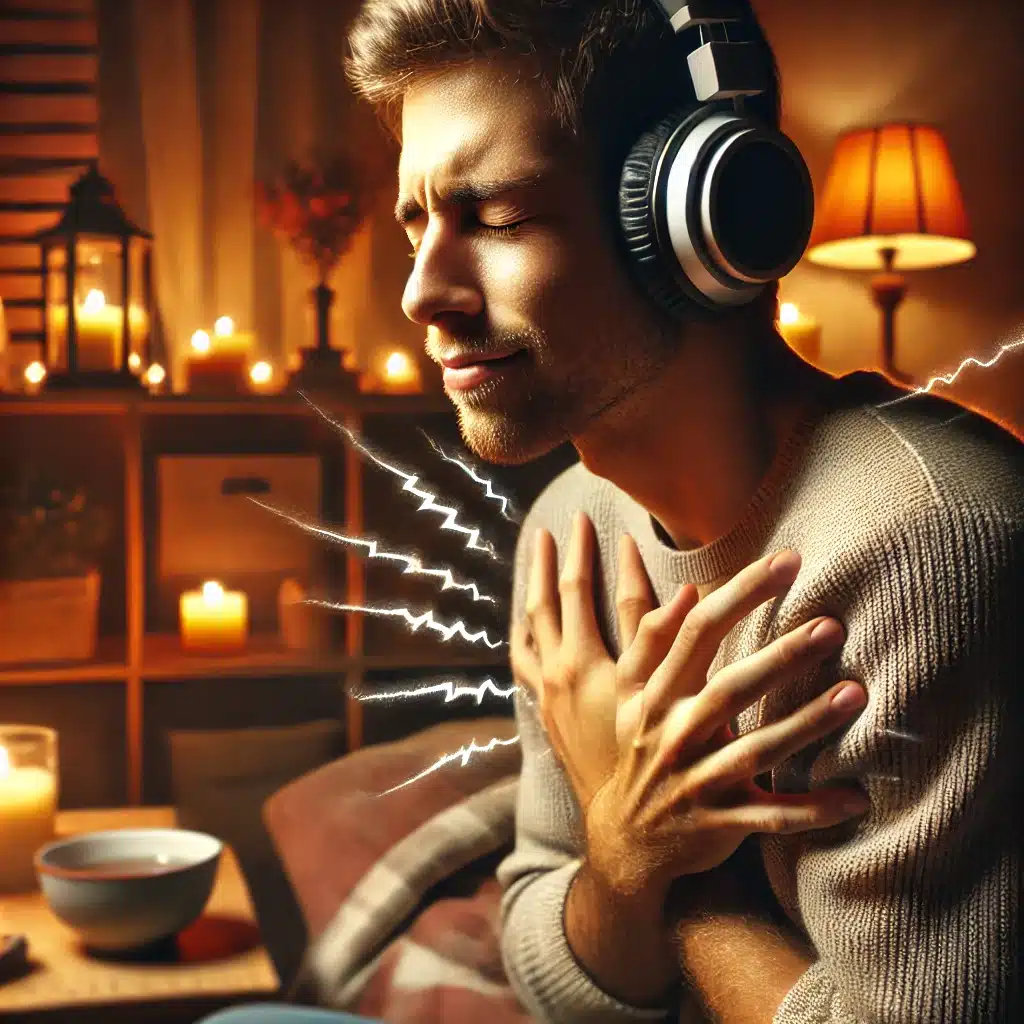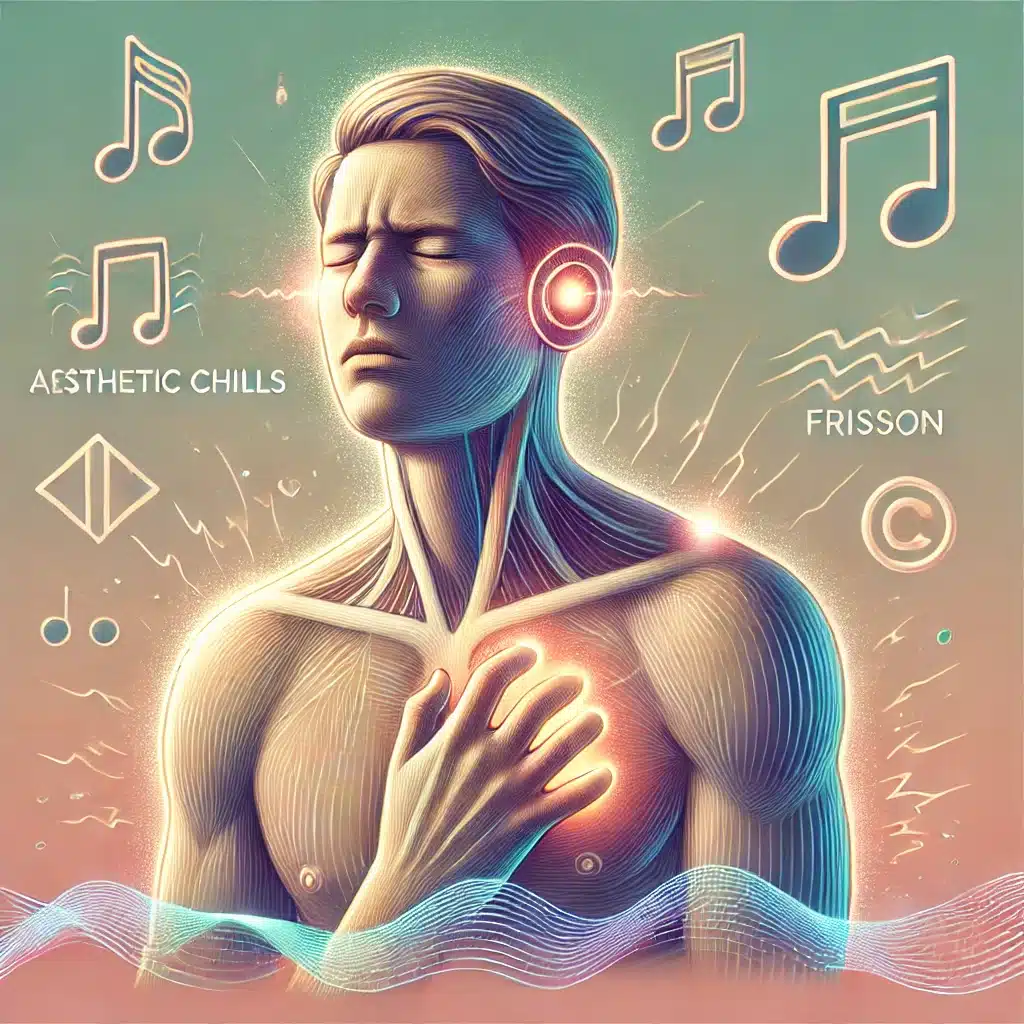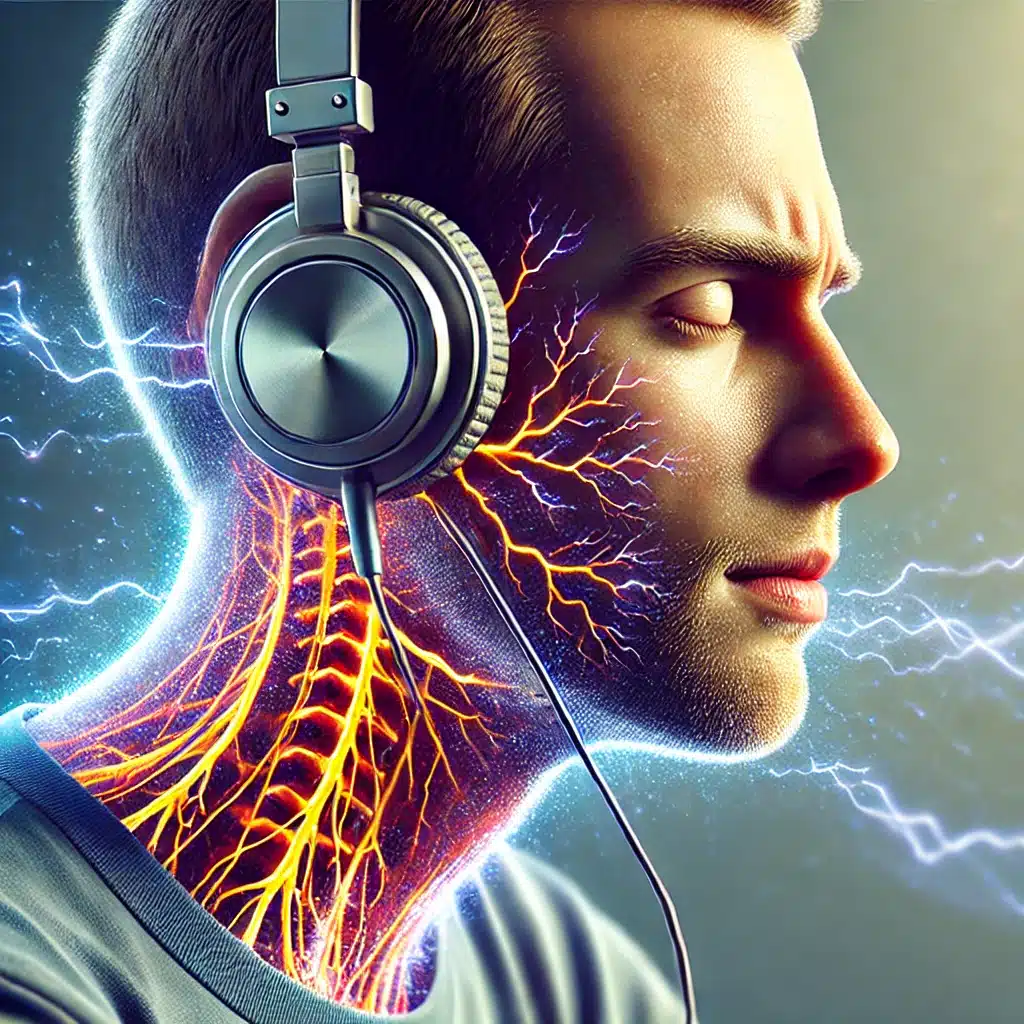Experiencing aesthetic chills can positively influence self-related beliefs in people with depression, similar to the effects of psychedelics, suggesting potential as a non-pharmacological intervention.
Highlights:
- Novel Approach: Aesthetic chills, characterized by physical sensations like shivers and goosebumps, may help shift negative cognitive patterns in depression.
- Study Results: 96 patients with major depressive disorder showed positive changes in self-acceptance and reduced shame after experiencing chills from specific multimedia stimuli.
- Comparable to Psychedelics: The emotional and cognitive effects of chills are similar to those induced by psychedelic experiences, impacting core beliefs and emotional breakthroughs.
- Future Potential: These findings suggest that aesthetic chills could be harnessed as a safe, non-drug-based treatment for depression, pending further research.
Source: BMC Psychiatry (2024)
Trial Details: Aesthetic Chills Induction on Depressive Cognition (2024)

The study aimed to investigate whether inducing aesthetic chills through multimedia stimuli could positively influence the core beliefs and emotional states of individuals diagnosed with major depressive disorder (MDD).
Sample
- Participants: 96 individuals diagnosed with MDD
- Demographics: 52 females, mean age of 37 years (SD = 14)
- Treatment Status: 90.7% undergoing therapy, 97.7% on medication (mostly SSRIs)
Methods
Stimuli
- Source: ChillsDB, a validated database of multimedia known to elicit chills.
- Content: Two stimuli were used—a Thai TV commercial and a motivational video medley.
Assessment Tools
- Emotional Breakthrough Inventory (EBI): Measured emotional breakthroughs.
- Young Positive Schema Questionnaire (YSPQ): Assessed changes in self-related schemas.
- Emotional and Physiological Responses: Self-reported experiences of chills, including intensity, frequency, and emotional impact.
Data
- Participants completed pre- and post-exposure assessments of their emotional states and self-schema.
- Qualitative and quantitative data were collected to gauge the depth and nature of their emotional responses.
Limitations
- Sample Size: Limited to 96 participants, which may not be representative of the general population.
- Self-Report Measures: Reliance on self-reported data may introduce bias.
- Lack of Clinical Assessment at Intervention Time: The study did not include formal diagnostic interviews by clinicians during the intervention.
- Homogeneity: Majority of participants were already undergoing therapy and medication, which may have influenced the results.
- Short-Term Assessment: The study focused on immediate effects without long-term follow-up to assess lasting impacts.
Conclusion: Aesthetic Chills for Major Depression
References
- Study: Aesthetic chills mitigate maladaptive cognition in depression (2024)
- Authors: Felix Schoeller et al.









